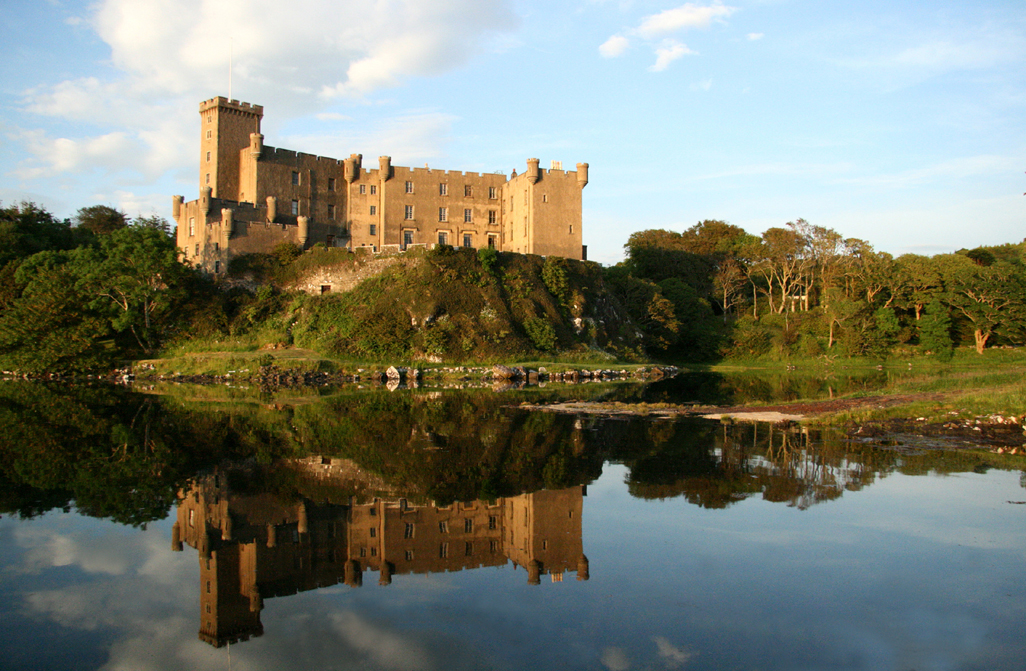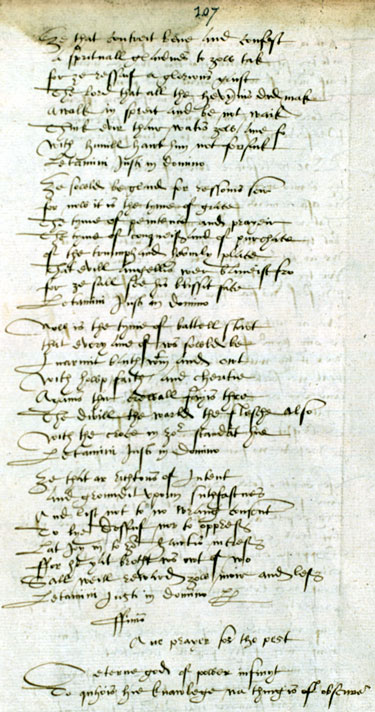|
Gilhemoire
Gilhemoire ''(born approximately 1207-8 AD)'' is the progenitor of the Scottish Clan Morrison, and half-brother to Leod, the progenitor of the Scottish Clan Macleod, according to Clan traditions. Life and family Gilhemoire ''(alternatively written as; Gillemorrie, Gillemhuire, or Gillemhoire)'' was a natural ''(yet illegitimate — born out of wedlock)'' son of Olaf the Black and Lauon, a Kintyre noblewoman. Olaf and Lauon's marriage was not considered legitimate due to their kinship ''(cousins)''. Eventually the marriage was nullified by Bishop Reginald of the Isles, and Gilhemoire was declared illegitimate ''(concerning possible ascension to the Throne of the Isle of Man).''This account is sourced from the Bannatyne Manuscript, and is verified by the oral traditions of the Clans Morrison and MacLeod. Olaf the Black sired two sons in the Hebrides ''(in addition to at least 3 other sons in Norway)''. The sons were Leod and Gilhemoire, who became the progenitors of t ... [...More Info...] [...Related Items...] OR: [Wikipedia] [Google] [Baidu] |
Clan Morrison
Clan Morrison is a Scottish clan. The Highland Clan Morrison is traditionally associated with the Isle of Lewis and Harris (Leòdhas) around Ness (Nis), Dun Pabbay, and Barvas (Barabhas), lands in Sutherland around Durness, and in North Uist. There are numerous Scottish clans, both Highland and Lowland, which use the surname ''Morison'' or ''Morrison''. In 1965, the Lord Lyon King of Arms decided to recognise one man as chief of all Morrisons, whether their clans were related or not. MacGilleMhoire clan of Lewis The Morrison clan centred on the Isle of Lewis derived their surname from ''MhicGilleMhoire'', a name said to mean "son of a servant of Mary". ("Mhic" meaning son, "Gille" meaning servant and "Mhoire" meaning Mary). Morrison 1880:pp 26. In time this Gaelic surname was Anglicised as ''Morrison''. The chiefs of the clan were the Morrisons of Habost and Barvas, and held the hereditary office of brieve. On consequence of this position the clan was also known as ''Clann-n ... [...More Info...] [...Related Items...] OR: [Wikipedia] [Google] [Baidu] |
Scottish People
The Scots ( sco, Scots Fowk; gd, Albannaich) are an ethnic group and nation native to Scotland. Historically, they emerged in the early Middle Ages from an amalgamation of two Celtic-speaking peoples, the Picts and Gaels, who founded the Kingdom of Scotland (or ''Alba'') in the 9th century. In the following two centuries, the Celtic-speaking Cumbrians of Strathclyde and the Germanic-speaking Angles of north Northumbria became part of Scotland. In the High Middle Ages, during the 12th-century Davidian Revolution, small numbers of Norman nobles migrated to the Lowlands. In the 13th century, the Norse-Gaels of the Western Isles became part of Scotland, followed by the Norse of the Northern Isles in the 15th century. In modern usage, "Scottish people" or "Scots" refers to anyone whose linguistic, cultural, family ancestral or genetic origins are from Scotland. The Latin word ''Scoti'' originally referred to the Gaels, but came to describe all inhabitants of Scotland. Cons ... [...More Info...] [...Related Items...] OR: [Wikipedia] [Google] [Baidu] |
Clan Macleod
Clan MacLeod (; gd, Clann Mac Leòid ) is a Highland Scottish clan associated with the Isle of Skye. There are two main branches of the clan: the MacLeods of Harris and Dunvegan, whose chief is MacLeod of MacLeod, are known in Gaelic as ' ("seed of Tormod"); the Clan MacLeod of Lewis and Raasay, whose chief is MacLeod of The Lewes ( gd, Mac Ghille Chaluim), are known in Gaelic as ' ("seed of Torcall"). Both branches claim descent from Leòd, who lived in the 13th century. Today, Clan MacLeod of The Lewes, Clan MacLeod of Raasay, and Clan MacLeod are represented by "Associated Clan MacLeod Societies", and the chiefs of the three clans. The association is made up of ten national societies across the world including: Australia, Canada, England, France, Germany, New Zealand, Scotland, South Africa, Switzerland, and the United States. History Origins The surname MacLeod means 'son of Leod'. The name Leod is an Anglicization of the Scottish Gaelic name Leòd, which is thought to ... [...More Info...] [...Related Items...] OR: [Wikipedia] [Google] [Baidu] |
Scottish Clan
A Scottish clan (from Goidelic languages, Gaelic , literally 'children', more broadly 'kindred') is a kinship group among the Scottish people. Clans give a sense of shared identity and descent to members, and in modern times have an official structure recognised by the Court of the Lord Lyon, which regulates Scottish heraldry and coats of arms. Most clans have their own tartan patterns, usually dating from the 19th century, which members may incorporate into kilts or other clothing. The modern image of clans, each with their own tartan and specific land, was promulgated by the Scottish author Sir Walter Scott after influence by others. Historically, tartan designs were associated with Lowland and Highland districts whose weavers tended to produce cloth patterns favoured in those districts. By process of social evolution, it followed that the clans/families prominent in a particular district would wear the tartan of that district, and it was but a short step for that community ... [...More Info...] [...Related Items...] OR: [Wikipedia] [Google] [Baidu] |
Olaf The Black
Óláfr Guðrøðarson (died 1237) (Scottish Gaelic: ''Amhlaibh Dubh''), also known as Olaf the Black, was a thirteenth-century King of the Isles, and a member of the Crovan dynasty. He was a son of Guðrøðr Óláfsson, King of the Isles and Fionnghuala Nic Lochlainn. Óláfr was a younger son of his father; Óláfr's elder brother, Rǫgnvaldr, probably had a different mother. According to the ''Chronicle of Mann'', Guðrøðr appointed Óláfr as heir since he had been born "in lawful wedlock". Whether or not this is the case, after Guðrøðr's death in 1187 the Islesmen instead appointed Rǫgnvaldr as king, as he was a capable adult and Óláfr was a mere child. Rǫgnvaldr ruled the island-kingdom for almost forty years, during which time the half-brothers vied for the kingship. Óláfr appears to have held authority on the island of Lewis and Harris. At some point, Óláfr appears to have confronted Rǫgnvaldr for a larger stake in the kingdom, after which Rǫgnvaldr had h ... [...More Info...] [...Related Items...] OR: [Wikipedia] [Google] [Baidu] |
Bannatyne Manuscript
The Bannatyne Manuscript is an anthology of literature compiled in Scotland in the sixteenth century. It is an important source for the Scots poetry of the fifteenth and sixteenth centuries. The manuscript contains texts of the poems of the great makars, many anonymous Scots pieces and works by medieval English poets. It was collected in 1568 by the Edinburgh merchant George Bannatyne when he was isolated in his home, escaping the plague that had reached Edinburgh. Bannatyne was motivated by his desire to preserve Scottish literary heritage when compiling this anthology and also included some of his own writing in the manuscript. Contrary to popular claims, it is not the earliest surviving record of the word "fuck". According to the text of the manuscript itself, it represents; :''Ane most godlie mirrie and lustie rapsodie made be sundrie learned Scots poets and written be George Bannatyne in the tyme of his youth.'' History A note in the manuscript records that it was pre ... [...More Info...] [...Related Items...] OR: [Wikipedia] [Google] [Baidu] |
Lewis - Harris Islands
Lewis may refer to: Names * Lewis (given name), including a list of people with the given name * Lewis (surname), including a list of people with the surname Music * Lewis (musician), Canadian singer * "Lewis (Mistreated)", a song by Radiohead from ''My Iron Lung'' Places * Lewis (crater), a crater on the far side of the Moon * Isle of Lewis, the northern part of Lewis and Harris, Western Isles, Scotland United States * Lewis, Colorado * Lewis, Indiana * Lewis, Iowa * Lewis, Kansas * Lewis Wharf, Boston, Massachusetts * Lewis, Missouri * Lewis, Essex County, New York * Lewis, Lewis County, New York * Lewis, North Carolina * Lewis, Vermont * Lewis, Wisconsin Ships * USS ''Lewis'' (1861), a sailing ship * USS ''Lewis'' (DE-535), a destroyer escort in commission from 1944 to 1946 Science * Lewis structure, a diagram of a molecule that shows the bonding between the atoms * Lewis acids and bases * Lewis antigen system, a human blood group system * Lewis number, a dimensionless ... [...More Info...] [...Related Items...] OR: [Wikipedia] [Google] [Baidu] |
Lord Lyon King Of Arms
The Right Honourable the Lord Lyon King of Arms, the head of Lyon Court, is the most junior of the Great Officers of State in Scotland and is the Scottish official with responsibility for regulating heraldry in that country, issuing new grants of arms, and serving as the judge of the Court of the Lord Lyon, the oldest heraldic court in the world that is still in daily operation. The historic title of the post was the ''High Sennachie'', and he was given the title of Lord Lyon from the lion in the coat of arms of Scotland. The post was in the early nineteenth century held by an important nobleman, the Earl of Kinnoull, whose functions were in practice carried out by the Lyon-Depute. The practice of appointing Lyon-Deputes, however, ceased in 1866. Responsibilities The Lord Lyon is responsible for overseeing state ceremonial in Scotland, for the granting of new arms to persons or organisations, and for confirming proven pedigrees and claims to existing arms as well as recog ... [...More Info...] [...Related Items...] OR: [Wikipedia] [Google] [Baidu] |





